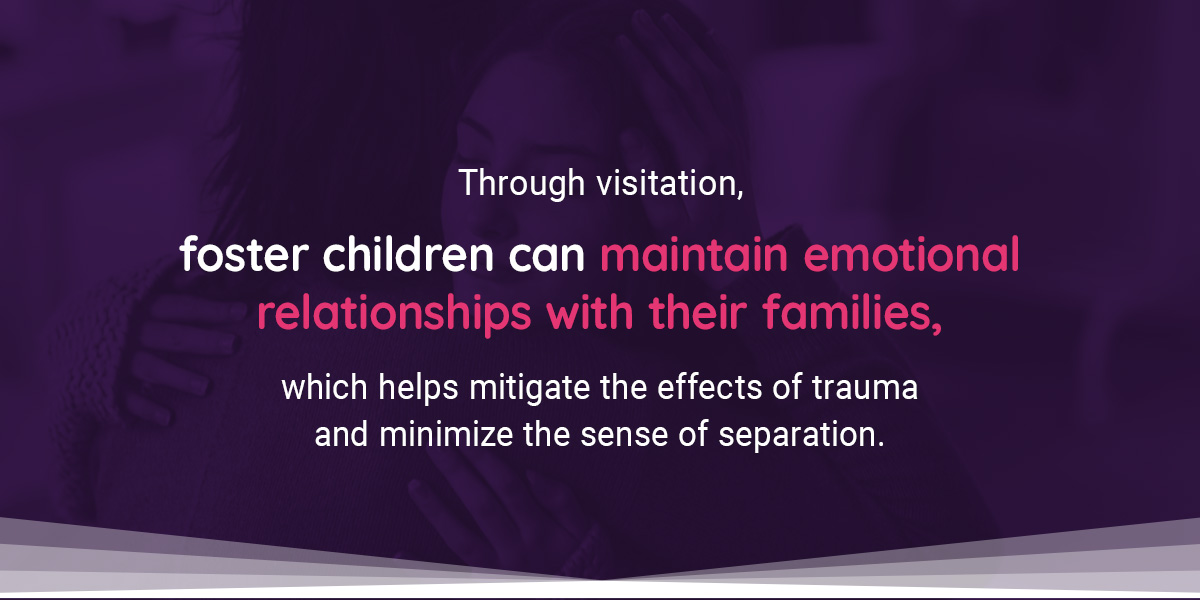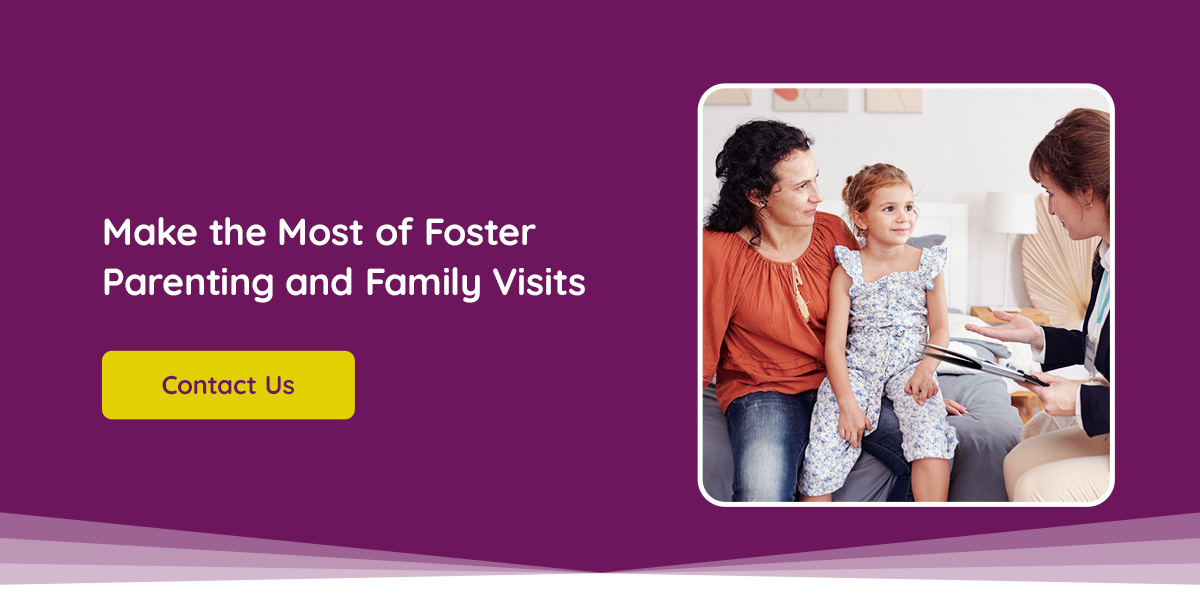Family visits are a special part of foster care that requires careful and intentional navigation. They are vital for maintaining and strengthening the bond between children and their birth families, and they can be exciting, overwhelming or stressful. With proper navigation, the visitation process can foster the children’s emotional and mental well-being, giving them opportunities to reconnect and rebuild relationships with their birth families.
If you’re interested in becoming a foster parent, you’ll want to learn more about navigating family visits in foster care. You’ll have a role to play in supporting the children through the process, and this guide will help you learn the ropes.
Why Family Visits Matter
Understanding why these visits matter is vital for helping you play your part. Here are some benefits of visitation for both families and foster children:
- Builds and maintains family bonds: Family bonds are essential for any child, including foster children. Although separated, foster children should develop positive and healthy bonds with their family members. These bonds give the children a sense of belonging and identity that impacts them long-term.
- Reassures families: Visitations allow families to see their children and feel assured that they are well taken care of.
- Fosters reunification: While separation is necessary for the immediate well-being of the children, the goal of foster care may not be to permanently sever their relationship with their families. Family visitation is a step in the right direction in the reunification process. Social workers can assess progress and determine readiness for reunification with regular visits.
- Promotes emotional and developmental well-being: The emotional impact of family visits in foster care is profound. Through visitation, foster children can maintain emotional relationships with their families, which helps mitigate the effects of trauma and minimize the sense of separation.
Types of Family Visits
The type of family visitation approved for each foster child depends on several factors, including court orders, family circumstances, safety considerations, and the child’s needs. There are two types of family visits you can expect in foster care:
- Supervised visits: During supervised family visits in foster care, a professional is always present to document the entire process and guarantee the child’s safety and well-being. You can expect this type of visitation earlier in a child’s case. Your role as a foster parent in a supervised visit arrangement is to transport the child to the location and provide as much emotional support as possible before and after the visit. You’re not required to be present during the visit.
- Unsupervised visits: After the family satisfies the court of their ability to provide the child with a safe and stable environment, the visits can transition to an unsupervised status. This means the child can visit their family without anyone present to supervise.
Methods and Frequency of Contact During Family Visits
Family visits can take several forms, all serving the same purpose of keeping foster children connected with their families. The method of contact will be one or more of the following:
- In-person visits: These physical visits can occur in designated locations, including the foster home.
- Virtual and phone visits: These remote contact visits are helpful, especially in cases where in-person visits are not possible. As a foster parent, your role in this set up is to ensure all necessary technological aspects of the visit are in place.
How frequently these visits occur depends on factors such as the child’s age and specific needs. While infants and younger children may require more frequent visits, older children might require fewer.
Preparing a Foster Child for a Family Visit
Your role as a foster parent shines through before, during, and after the visit. Let’s discuss some tips for preparing for foster child visitation at different stages.
Before the Visit
Preparing the foster child before the visit is crucial to ensure they are ready. It’s good practice to communicate with the child about the upcoming visit. Whether it’s excitement, anxiety, or fear, emotions creep in before visits. You can support the child by addressing any feelings they may have. You’re also responsible as the foster parent for preparing transportation, confirming schedules, and packing the necessary belongings, like comfort toys, for the visit.
During the Visit
Foster children require support during visits with their families. Support during family visits can include maintaining a positive attitude, reassuring the child, communicating with the birth family and caseworkers, respecting boundaries, and observing the child. You should also constantly look out for the child’s safety.
After the Visit
You may notice changes in your foster child’s behavior after family visits due to overwhelming feelings or behavioral setbacks. Your role involves helping the child process their emotions post-visit. Supporting your foster child after a family visit involves recognizing behavioral changes and stress signals and providing reassurance and stability.
Common Challenges and How to Navigate Them
Foster children and family visits are not always predictable. While you hope for the best, you should also prepare for common challenges like:
- Difficult emotions and behavioral setbacks: Every child will respond differently to foster care family visits. When a child experiences difficult emotions or displays challenging behaviors, your role is to respond with empathy and create a stable environment where the child feels safe.
- Missed or canceled visits: Sometimes, the family might miss or cancel their visit despite all your preparations. In such cases, the child needs reassurance and help managing expectations for future arrangements.
- Complex relationships: Children with complex family dynamics require extra care when navigating family visits in foster care. They can be more emotional or overwhelmed before, during, and after visits. Encourage them to communicate more openly about their feelings and give them all the reassurance they need to navigate the experience.
Navigating family visits in foster care is not something you have to do alone. It’s in the child’s best interest for you to take advantage of resources like social workers, therapists, and foster family support and training. Tap in to support groups for foster families and leverage educational materials about visitation.
Make the Most of Foster Parenting and Family Visits
When done right, family visits can be a healthy part of a foster child’s life. They build family bonds, promote emotional and mental well-being, and increase the chances of reunification in the long run. As you navigate each visit, remember that each child’s experience is unique, and your support can make all the difference.
As you embark on this journey, remember that you’re not alone. You can help foster children reconnect with their families healthily with the proper foster family support and training. Whether you’re interested in becoming a foster parent or seeking help to navigate family visits better, contact us at Knotts Family Agency for more support. We are all about empowering foster parents to be their best and are happy to provide all the support you need.
Related Posts:
- How Do I Prepare My Home to Be a Foster Parent?
- Ensuring Safety Around Swimming Pools in Foster Homes
- Prioritizing Safety in Vehicle Transportation for Foster Children
- Guiding Foster Children on Their Journey to School: Navigating Safety and Independence
- Navigating Child Supervision and Daycare in Foster Care: Understanding Your Responsibilities
- Food and Nutrition Requirements in Foster Care



